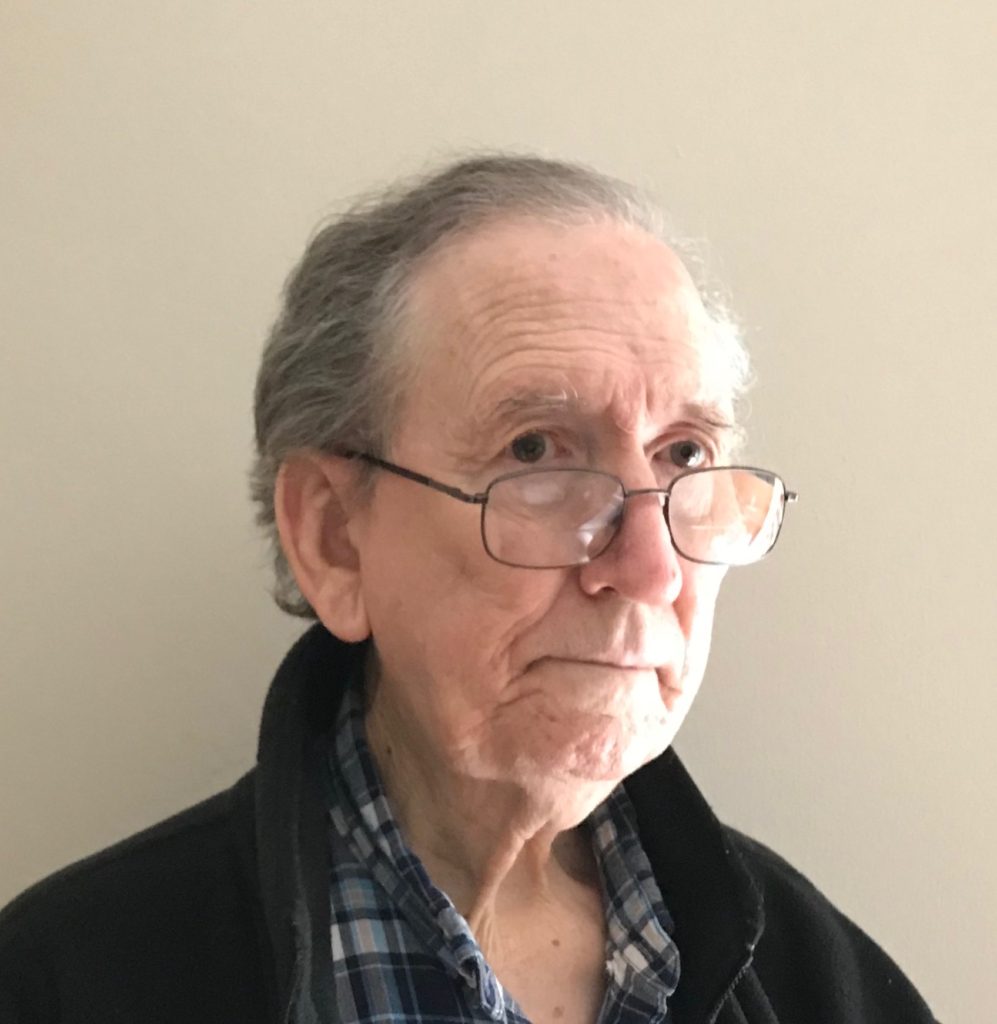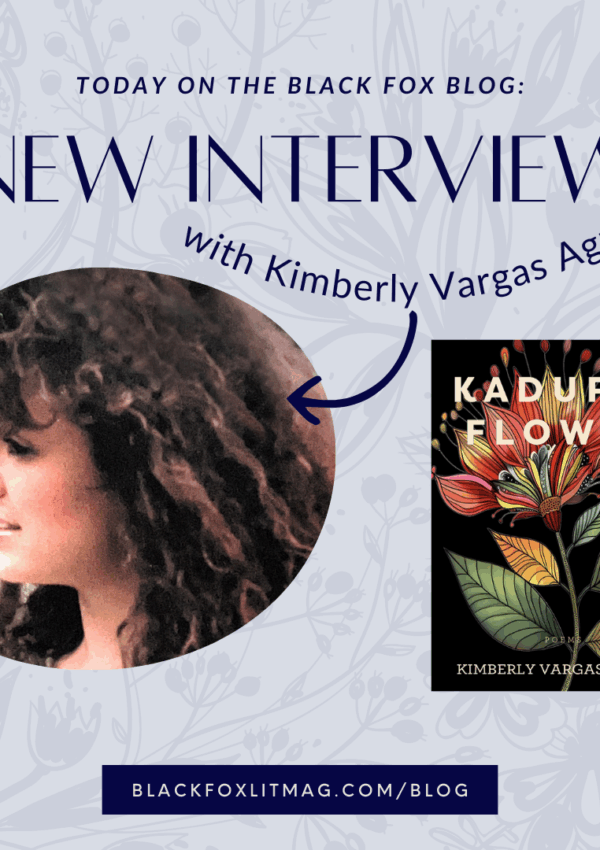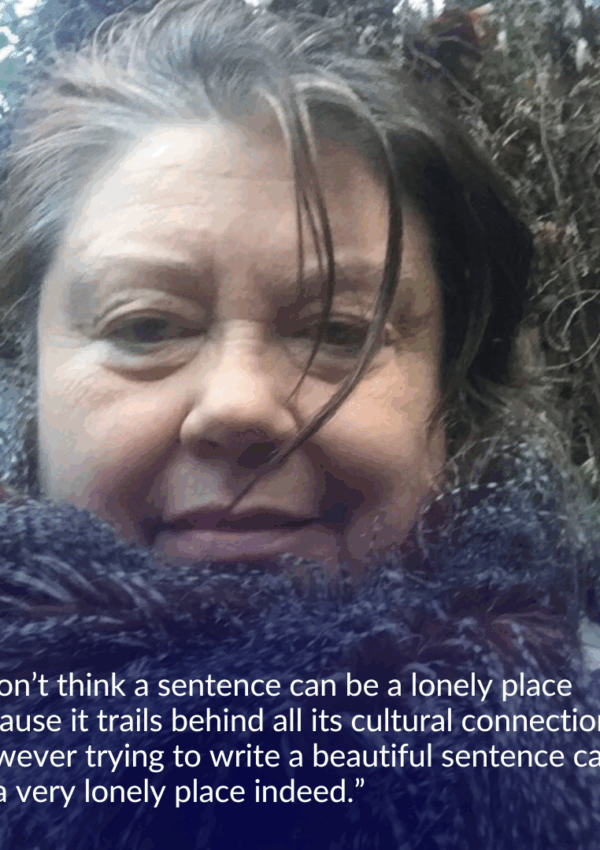There is an open canal between the body and the mind where feelings are concerned, and a sensation in the body is felt immediately in the mind. It may seem absurd to mention such an obvious point, but this truism has relevance for the fiction writer. Bodily feelings, recorded on the page, tug the barge of narration up the open canal to the mind and evoke pictures of actions. Thus, the haptic is the tugboat of narrative, the second-strongest driver of narrative after the visual. I hope to show how this works through the words of several fiction writers.
Amy Gustine, a fine contemporary fiction writer, uses the haptic well in her short story “Unattended” (the second story in her book, You Should Pity Us Instead). The very first sentence screams of the haptic: “Joanne wakes with the worst earache she’s had in years.” Gustine continues: “Ryan is already gone and the baby is crying, of course. His diaper has come loose—she put it on in the dark, at 3 a.m. [the haptic again]—and he sits in a yellow halo clutching his favorite toy, a stuffed elephant now marinated in piss [both “clutching” and the sopping-wet elephant evoke the haptic]. When she plucks the elephant from his grip, the scream intensifies [grip is haptic].” I should remark that You Should Pity Us Instead is a feast of the senses, all five of them.
Ursula Hegi, in my judgment one of the more brilliant of our contemporary fiction writers, has firmly established herself with Floating in My Mother’s Palm, Tearing the Silence, Salt Dancers, and Stones from the River, one of my favorite novels by a contemporary. In the latter, Trudi Montag is a dwarf who as a child prays to grow tall and for her head to shrink. She lives in a small town in Nazi Germany. As she matures under this oppressive regime, she tries to compensate for her difference from other people by writing letters to men she does not know describing herself as a dark-haired beauty and offering to meet them at a restaurant. Then she goes to the restaurant and observes the disappointment of the men when their date does not show. Hegi relates one of these scenes. In it, Box 241 (the only name Trudi knows the man by) enrages her by never even glancing her way, nervously watching the door instead; so, she resolves to humiliate him. She writes a note: “I have seen you, and I find you too pitiful to consider.” Now she plans to deliver the note. “She signed it Angelika and paid her bill [this is both visual and haptic: one feels oneself signing a note]. Her heart a wild rhythm in her throat [haptic], she stood up. Her high heels felt wobbly as she neared the man’s table [again, the wobbly heels are haptic. Hegi is working the senses of sight and touch—or feel—for all they are worth].”
In this scene, Hegi employs sight, touch, and sound. The novel is alive with the senses, but in Hegi, the haptic moves the story along with special energy.
Sometimes the sense of touch is conveyed so subtly by a writer that an unreflective reader might not notice it. If I may be forgiven use of an author of an earlier generation, we might look at sensory detail in Willa Cather’s Death Comes for the Archbishop. Father Jean Marie Latour, a young French priest, is lost in the desert. He is riding a mare, with a pack mule on a tether. He has been for a long time without water or food and is exhausted and dehydrated with long thirst, and delirious [exhaustion and dehydration invoke the haptic]. His animals are almost dead with thirst and cannot keep pushing forward much longer. Picking up the narrative here:
All at once Father Latour thought he felt a change in the body of his mare. She lifted her head for the first time in a long while and seemed to redistribute her weight upon her legs. The pack-mule behaved in a similar manner, and both quickened their pace. Was it possible they scented water?
The redistribution of weight upon the legs of the horse would be felt by the rider quicker than seen, as would the quickening of pace. Thus, a subtle resort to the haptic.
I said the haptic is the second most powerful driver of fiction after the visual. Rick Bass has this in his long short story “Mahatma Joe” (in his book Platte River):
Then she would begin carrying buckets of water up from the river. Each bucket held eight gallons; each full bucket weighed sixty-four pounds. Leena wore leather gloves but still developed red stinging blisters that made her want to cry, want to stop, but she knew that she couldn’t, that Joe was not strong enough to carry the water, a big sloshing bucket in each hand, and that if she did not do it, it would not get done.
Her arms felt strained, elongated even, as she hauled the full buckets up to the garden. By the time she got there, the cords in her neck felt stretched out as well.
The haptic, even more than the visual, drives those sentences. Bass’s writing goes heavy on the haptic, and this, among other strengths (his writing moves with poetic dash through all the senses), has made him one of our premier fiction writers.
Alice Walker, author of The Color Purple, has this in her short story “Strong Horse Tea”:
Snooks, under a pile of faded quilts, made a small oblong mound in the bed. His head was like a ball of black putty wedged between the thin covers and the dingy yellow pillow. His eyes were partly open as if he were peeping out of his hard wasted skull at the chilly room, and the forceful pulse of his breathing caused a faint rustling in the sheets near his mouth like the wind pushing damp papers in a shallow ditch.
His skull is “hard” and “wasted,” the room is chilly, and his breathing is a “forceful pulse” that causes “a faint rustling in the sheets” like “the wind pushing damp papers in a shallow ditch.” The appeal here is visual, auditory, and haptic, but especially the latter, with the chilly room, the hard skull, and the forceful pulse of the baby’s breathing. Walker resorts to all five senses in her writing, but her use of the haptic is particularly telling.
So, when you are composing your fiction, don’t neglect the haptic. It is the tugboat of narrative, appealing directly to the emotions of your readers.

David Massey got a late start as a serious literary artist but takes heart from the examples of Aeschylus, Sophocles, Plautus, and Cervantes among the classics and Henry Roth, John Irving, Philip Roth, and Joyce Carol Oates among his contemporaries, all of whom have excelled in their golden years. Massey has a modicum of training for a creative writing career: a Masters in English Literature After 1660 from the University of South Carolina and, while there, several courses in creative writing under George Garrett and James Dickey; a lifetime of omnivorous reading; and 18 years as a journalist. He has a few stories published, and three novels, two books of short stories, and six novellas ready as soon as he can find a publisher (or publishers).



